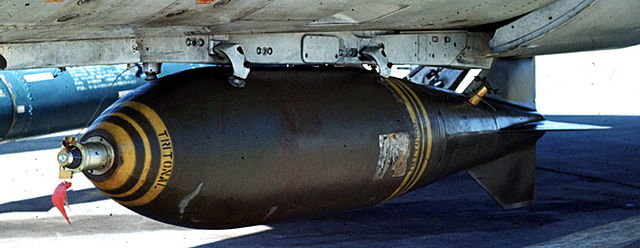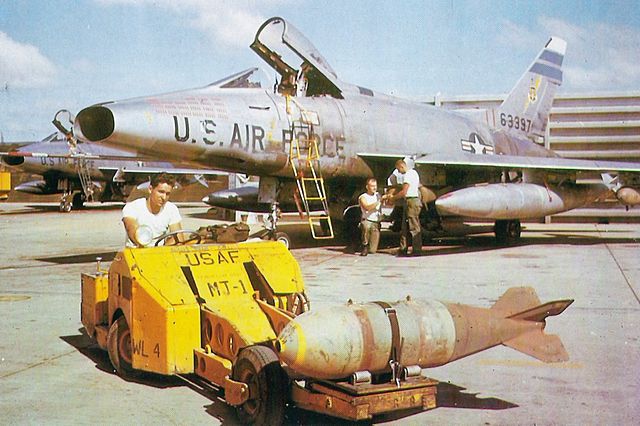The M117 is an air-dropped demolition bomb used by United States military forces. The weapon dates back to the Korean War of the early 1950s. Although it has a nominal weight of 750 pounds (340 kg) its actual weight, depending on fuze and retardation options, can be around 820 pounds (372 kg). The bomb's explosive content is typically 386 pounds (175 kg) of Tritonal or 377 pounds (171 kg) of Minol in the case of the M117A1E2 due to their higher density and detonation velocity compared to TNT. Demolition bombs rely on time delayed fuzes which allow the bomb to burrow into a building or other structure before detonating. The M117 can be configured with a conical low-drag tail for medium and high altitude deliveries or a high-drag tail fin for low-altitude drops, delaying the bombs hitting their targets ensuring bombers are out of the blast zone before detonation. The M117 was the basis for the BOLT-117, the world's first laser-guided bomb.
M117 bomb
An F-100D of the 308th TFS, being loaded with Mk 117 750 lb bombs at Tuy Hoa, South Vietnam, in early 1966
The Texas Instruments BOLT-117, retrospectively redesignated as the GBU-1/B was the world's first laser-guided bomb (LGB). It consisted of a standard M117 750-pound (340 kg) bomb case with a KMU-342 laser guidance and control kit. This consisted of a gimballed laser seeker on the front of the bomb and tail and control fins to guide the bomb to the target. The latter used the bang-bang method of control where each control surface was either straight or fully deflected. This was inefficient aerodynamically, but reduced costs and minimized demands on the primitive onboard electronics.
BOLT-117 on display
A 497th TFS F-4D with two BOLT-117s at Ubon Royal Thai Air Force Base, 1971.




